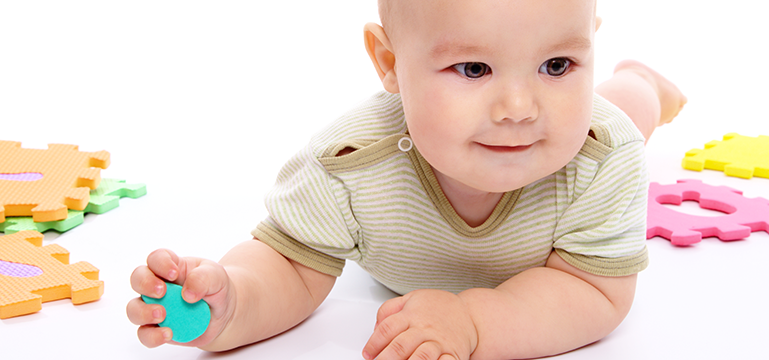Providing an engaging learning environment for youngest learners

Quick links:
Information about the setting
The setting’s building is on two floors. The older children use the lower floor and the upper floor is used for babies from birth to two and a half years old.
The setting provides foundation phase early education and is working towards the new curriculum for Wales.
The nursery has strong community links and makes the most of facilities in the local area to enrich the children’s experiences. For example, visits take place to the town centre and the local park, where use is made of the cycle track. The setting’s vision for the future is to provide more of these real experiences for children and continue to improve the provision in the outdoor area.
Context and background to the effective or innovative practice
At the start of the nursery’s improvement journey, its upper floor was an open space. The resources were mainly plastic and brightly coloured and there was a small fenced area for the youngest babies. There were no defined areas and, because it was such an open space, toddlers tended to run around rather than settle to activities.
In preparing for the new curriculum, practitioners introduced ‘real life’, practical activities very successfully on the lower floor. They realised that the toddlers on the upper floor would benefit from this approach too.
Description of nature of strategy or activity
Practitioners looked at the room from the perspective of the babies and toddlers, and began to make changes. Their first step was to provide moveable wooden structures to divide the area up and replace the carpets with laminate flooring. Resources were introduced to support open-ended play as well as creating more structured areas that provide specific learning opportunities such as for mark making, using information and communication technology resources, creative play and role-play. Practitioners replaced the plastic toys with natural resources, and chose neutral colours for the décor and furnishings to create a calm environment.
The next step was to improve the environment for the babies. The metal fence was removed to create an open play space with rugs and floor cushions, natural resources for play and coracles for the babies to sleep in. Practitioners adapted the sleep room to become a quiet room by removing the door. They put a sofa in this area for staff and babies to bottle feed and cuddle up on, creating a home from home feel. There are lots of natural products here to stimulate sensory skills and give the babies the opportunity to develop an understanding of the real world through play.
The setting displays mirrors and resources at floor level, and practitioners can move the wooden structures to adapt the environment on the upper floor easily to meet the youngest children’s changing needs.
What impact has this work had on provision and children’s standards?
The changes have had a positive impact on children’s learning. Toddlers choose what they want to do more confidently and are more engaged in activities. They will often lead an adult by the hand to where they want to play. The flow and access to different areas allow them to be more independent. They develop a range of skills effectively, including exploring cause and effect, and using the natural and open-ended resources.
The babies enjoy the large open space. It enables practitioners to interact with them in a calm, quiet and homely environment. Babies respond well to the natural resources and engaging activities that practitioners modify to suit their individual needs.
How have you shared your good practice?
Practitioners host network meetings and training sessions for others in Torfaen and share good practice by encouraging them to tour the setting during these events.